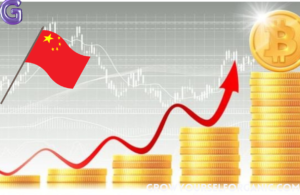The Inflation Effect: How Inflation Can Affect Your Savings and Investments
Understanding Inflation’s Erosion of Savings
The Dwindling Real Value of Savings Accounts
In an environment where inflation rates surpass the interest rates of savings accounts, the purchasing power of your savings inevitably diminishes. For instance, if inflation is at 3% but your savings account only offers a 1% return, the real value of your savings is effectively eroded by 2% annually. This erosion can have a profound impact on your financial health, particularly when considering long-term goals like retirement planning.
Despite the bleak outlook, there are silver linings. Recent trends have shown a rise in the annual percentage yields (APYs) of various savings vehicles. High-yield savings accounts, certificates of deposit (CDs), and treasury bonds are now offering rates between 4% and 5%, levels not seen since the 1990s. It’s advisable to capitalize on these higher rates to bolster your savings against inflationary pressures.
Here are some top offers as of February 23, 2024, that illustrate the potential returns from high-yield savings options:
| Account Type | APY* | Comparison to Average** |
|---|---|---|
| High-Yield Savings Account | 4.5% | 10x higher than average |
| Certificate of Deposit (CD) | 5.0% | Over 10x higher than average |
| Treasury Bonds | 4.0% | 8.5x higher than average |
*Annual Percentage Yield
**Based on FDIC average savings rate of 0.47% and a $2,500 deposit.
While these options present a more favorable scenario for savers, it’s crucial to remain vigilant and continuously seek out the best rates and savings vehicles to protect the real value of your assets.
Inflation’s Impact on Retirement Savings
When planning for retirement, it’s crucial to understand that the value of your savings is not static. Inflation, the gradual increase in prices over time, can significantly erode the purchasing power of your nest egg. As a result, the money you save today may not go as far in the future, especially as life expectancy increases and retirees face longer periods of financial self-sufficiency.
Key Insights on Inflation and Retirement:
- Inflation reduces the real value of money over time, meaning you’ll need more funds to maintain the same standard of living.
- Healthcare costs, which are a significant part of retirement expenses, often rise faster than general inflation, adding to the financial burden.
- The location of your retirement can also influence the impact of inflation, as the cost of living varies by area.
To mitigate the effects of inflation, it’s essential to incorporate strategies that account for rising costs into your retirement planning. This may include investing in assets that historically outpace inflation, such as stocks or real estate, and considering the use of inflation-adjusted retirement accounts or annuities. By doing so, you can help ensure that your retirement savings maintain their value and purchasing power over time.
Strategies to Factor Inflation into Financial Planning
Inflation can silently erode the purchasing power of your savings and investments, making it a critical factor to consider in financial planning. To safeguard against this, it’s essential to adopt strategies that can help manage the impact of inflation on your financial future. One effective approach is to aim for investments that offer returns exceeding the inflation rate. For example, if inflation is at 2%, targeting assets with returns greater than 2% can be beneficial.
Diversification is another key strategy. By spreading investments across various asset classes, such as stocks, real estate, and bonds, you can mitigate the risk of inflation affecting all your assets uniformly. Additionally, considering inflation-protected securities like Treasury Inflation-Protected Securities (TIPS) can provide a direct hedge against inflation.
For those planning for retirement, understanding the role of inflation in retirement planning is paramount. Incorporating inflation into your retirement strategy is not just advisable; it’s a key to a workable financial plan for the future. Annuities, for instance, should be planned with inflation in mind to prevent a decline in the real value of your income over time. A well-diversified investment strategy, coupled with inflation protection options, can ensure that your retirement income keeps pace with the cost of living.
Investments as a Shield Against Inflation
Assets That Outpace Inflation
In the quest to safeguard wealth against the eroding effects of inflation, certain asset classes have historically proven to be more resilient. Real estate and stocks are prime examples of assets that not only retain value over time but often appreciate, providing a potential hedge against inflationary pressures. These assets can be particularly effective because they tend to increase in value, which can help offset the effects of inflation.
When considering asset allocation, it’s crucial to recognize that not all assets serve as effective inflation hedges. While some, like commodities and real estate investment trusts (REITs), have a track record of performing well during inflationary times, others may falter. Bonds, for instance, often struggle to keep pace with inflation, especially when interest rates are low. This necessitates a closer look at alternatives such as inflation-protected securities that are designed to maintain purchasing power.
The table below outlines a selection of asset classes that can serve as protection against inflation, as suggested by Investopedia:
| Asset Class | Description |
|---|---|
| Gold | A traditional hedge against inflation. |
| Commodities | Includes raw materials like oil and agricultural products. |
| 60/40 Stock/Bond Portfolio | A balanced approach that can mitigate risk. |
| REITs | Allows investment in real estate markets without owning physical property. |
| S&P 500 Index | A broad representation of the U.S. stock market. |
It’s important to note that while these assets may offer some protection, they are not immune to market fluctuations and other economic factors. Therefore, a well-thought-out investment strategy that includes a mix of these assets can be crucial for maintaining and growing wealth in the face of inflation.
Balancing Investment Benefits with Market Risks
Investing during times of inflation requires a careful balance between the potential benefits of various assets and the inherent risks of the market. Diversification is a key strategy in this balancing act. By spreading investments across different asset classes, such as equities, fixed-income securities, and other vehicles, investors can reduce the impact of inflation on their portfolios.
Inflation’s influence on investment decisions cannot be overstated. It affects the real return of investments, prompting investors to seek assets that historically perform well in inflationary periods. Market intelligence plays a crucial role in this process, offering insights into inflation trends and helping investors align their choices with their risk tolerance and financial goals.
Here are some steps to manage inflation risk effectively:
- Invest in inflation-indexed bonds to directly hedge against inflation.
- Diversify bond portfolios by including bonds with varying maturities and credit qualities.
- Stay informed about market sentiment towards inflation to make proactive investment decisions.
- Consider assets with a history of outpacing inflation, such as real estate or commodities, as part of a diversified portfolio.
Diversifying Revenue Streams and Mindful Spending for Retirees
Retirees face the challenge of ensuring their income keeps pace with inflation to maintain their standard of living. Diversifying revenue streams is a key strategy, involving a mix of interest, dividends, and rental income, which can adjust with inflation over time. It’s crucial for retirees to periodically review their income sources to ensure they remain competitive in an inflationary environment.
Mindful spending is equally important. A survey by the Employee Benefits Research Institute highlighted that many retirees spend more in the early years of retirement, potentially leading to lifestyle inflation. With more free time, the temptation to spend increases, making it essential to balance the desire for leisure with the reality of a fixed income.
For those with significant savings or investment balances, the threat of inflation cannot be ignored. The purchasing power of cash savings can diminish over time, as evidenced by the fact that a dollar in 1983 had the equivalent purchasing power of just 37 cents in 2021. Therefore, putting cash to work through conservative investments can yield better returns than traditional savings accounts, helping to safeguard against inflation’s erosion.
Here are some practical steps retirees can take to protect their income against inflation:
- Regularly assess and adjust investment portfolios to align with current inflation rates.
- Consider conservative investments that offer better returns than savings accounts.
- Plan for increased costs in leisure activities, such as travel, which tend to rise over time.
- Evaluate housing options, including downsizing or renting, to better manage living expenses.
The Real Returns Dilemma: Inflation’s Effect on Investments
Understanding Real Returns in an Inflationary Context
When evaluating the performance of investments, it’s crucial to consider the real rate of return, which accounts for the erosive effect of inflation on purchasing power. A nominal return might look impressive on paper, but it’s the real return that tells you if your investment is truly growing in value relative to the cost of living. For instance, a nominal return of 10% is significantly diminished if inflation is running at 3%, leaving you with a real return of just 7%.
Inflation-adjusted returns are essential for a clear picture of an investment’s true performance. They help investors understand the actual growth of their assets after inflation. For example, with a 6% nominal return over a decade and an average annual inflation rate of 2%, the real return would be around 3.6%, not the full 6%.
To make informed investment decisions, consider the following points:
- Nominal vs. Real Returns: Always differentiate between the two when reviewing historical returns.
- Inflation-Adjusted Returns: Use these to gauge the genuine growth of your investments.
- ROI Analysis: Factor in inflation to assess the true profitability of potential investments.
The Long-Term Consequences of Inflation on Investments
Inflation’s subtle yet persistent influence on the economy can have profound effects on long-term investments. Over extended periods, even moderate inflation can significantly erode the purchasing power of money. For instance, with an average inflation rate of 3% annually, a dollar’s worth would halve over three decades. This means that an investment yielding a 5% nominal return would effectively result in a mere 2% real return after accounting for inflation.
It’s crucial to recognize that while some assets, like stocks, may historically outpace inflation, there are no guarantees. Diversifying your portfolio is a key strategy to mitigate risk and aim for returns that exceed inflation. Here are some points to consider:
- Inflation diminishes the real value of money over time.
- Positive nominal returns on investments might not translate into real gains.
- Equity investments can benefit from inflation, leading to higher capital gains.
- Conversely, inflation can also reduce the real value of these gains, impacting overall returns.
Understanding the dual nature of inflation’s impact on investments is essential. It can both enhance and undermine the value of your assets, making it a critical factor in investment planning and decision-making.
Inflation’s Varied Impact on Different Asset Classes
Inflation’s influence on asset classes is not uniform, and understanding this variability is crucial for investors. For example, fixed-income investments such as bonds are generally more vulnerable to inflation. This is because the fixed interest payments lose purchasing power as the cost of living increases. Conversely, equities like stocks may offer some protection against inflation since companies can raise prices to match inflationary pressures, potentially leading to higher profits and dividends.
Diversification is a key strategy in managing inflation risk. By spreading investments across various asset classes, investors can mitigate the impact of inflation. While stocks have historically outpaced inflation, bonds provide a stable income, and real estate can serve as a hedge, as property values often rise with inflation. However, not all assets are equally effective as inflation hedges, and investment decisions should be made with caution.
The table below illustrates how different asset classes have performed during past inflationary periods, offering a retrospective on the drivers of inflation and their impact on asset values:
| Asset Class | Performance During Inflation |
|---|---|
| Bonds | Generally Negative |
| Stocks | Often Positive |
| Real Estate | Typically Positive |
It’s important to note that while some assets may increase in value with inflation, rapid inflation can lead to economic downturns, affecting all asset classes negatively.
Navigating Asset Value Fluctuations Due to Inflation
Inflation-Induced Devaluation of Assets
Inflation plays a pivotal role in the devaluation of assets, as it erodes the purchasing power of money over time. This phenomenon can lead to a decrease in the real value of assets, particularly if they do not appreciate at a rate that outpaces inflation. For instance, consider a scenario where an individual purchases a property for $100,000. If inflation rises by 5%, the property would need to appreciate to $105,000 simply to maintain its original purchasing power. Failure to do so would result in a loss of real value.
Investors must remain vigilant about the inflationary pressures on their assets. Understanding key economic factors, such as currency depreciation, can illuminate how inflation contributes to the rising cost of imported goods, which in turn affects consumer spending and investment behaviors. It is essential for investors to stay informed about government policies and interest rates, as these can influence inflation and, consequently, asset values.
To mitigate the risks of inflation-induced devaluation, investors often turn to various strategies. Diversification across asset classes, investing in inflation-resistant assets, and adjusting investment portfolios in response to changing inflation expectations are common approaches to preserving asset value in an inflationary environment.
Maintaining Purchasing Power Through Asset Appreciation
In an environment where inflation is a constant, maintaining the purchasing power of your assets is crucial. Assets that have the potential to increase in value over time, such as real estate or stocks, are essential components of a well-rounded investment strategy. These assets often appreciate at a rate that can outpace inflation, providing a buffer that helps preserve the real value of your investments.
However, not all assets are equally effective in combating inflation. For instance, bonds may not fare as well, especially when interest rates are low. In such scenarios, investors might turn to inflation-protected securities to better safeguard their purchasing power. It’s important to recognize that the impact of inflation on asset values can be significant. If an asset fails to appreciate at a rate that exceeds inflation, it effectively loses purchasing power, which can erode your financial security over time.
To ensure that your assets appreciate in line with or above inflation, consider the following points:
- Diversify your investments to spread risk and potential for appreciation.
- Monitor long-term yields and inflation expectations to make informed investment decisions.
- Explore various investment options, including those specifically designed to counter inflation, such as Treasury Inflation-Protected Securities (TIPS).
By taking these steps, you can work towards a financial future where your assets not only retain their value but potentially grow, allowing you to sustain or even improve your quality of life.
The Importance of Asset Valuation in an Inflationary Economy
In an inflationary economy, the valuation of assets becomes a critical exercise for investors. As inflation erodes the purchasing power of currency, assets that do not appreciate in value correspondingly can effectively lose their worth. For instance, a property bought for $100,000 would need to escalate to $105,000 after a 5% inflation rate to preserve its real value. Without this appreciation, the asset suffers a loss in real terms.
Government policies aimed at curbing inflation can also sway asset values. Investors must remain vigilant about such policies, as they can either mitigate or exacerbate the inflationary impact on assets. It is not just about tracking inflation rates but also understanding the broader economic policies that influence these rates.
Assets like real estate or stocks, which have the potential to appreciate over time, can serve as hedges against inflation. The appreciation of these assets can help counterbalance the inflationary loss of purchasing power. However, the role of inflation in asset debasement is significant, and investors need to be proactive in protecting their investments. Staying informed and adopting strategies to hedge against inflation are essential steps in safeguarding asset values.
Inflation Calculators and Tools for Savvy Saving
How Taxes and Inflation Affect Your Savings
When planning for the future, understanding the dual impact of taxes and inflation on your savings is crucial. Inflation gradually diminishes the purchasing power of money, meaning that over time, the real value of your savings could decline if they do not grow at a rate that outpaces inflation. This is particularly concerning for those with funds in low-interest savings accounts, where the earned interest may not keep up with inflation rates, leading to a decrease in the real value of your savings.
Taxes further complicate the picture by reducing the amount of money you can put aside or the growth you can achieve. For example, if you’re in a high tax bracket, a significant portion of your interest earnings could be lost to taxes, exacerbating the effects of inflation. It’s important to consider both of these factors when evaluating the long-term potential of your savings plan.
Here’s a brief overview of how inflation and taxes can impact your savings over time:
- Inflation Erosion: The value of your savings diminishes as the cost of living increases.
- Tax Bite: Taxes can take a chunk out of your interest earnings, reducing your savings’ growth potential.
- Real Value Decline: The combination of inflation and taxes can lead to a significant decline in the purchasing power of your savings over the years.
To mitigate these effects, it’s advisable to seek savings and investment options that offer returns above the inflation rate and to take advantage of tax-efficient investment vehicles.
Using Inflation Calculators to Plan Ahead
Inflation calculators are essential tools for individuals looking to maintain the purchasing power of their savings over time. By inputting various data such as current savings, expected rate of inflation, and time horizon, these calculators can provide a projection of how much your savings will be worth in real terms in the future.
Key Steps to Utilize Inflation Calculators Effectively:
- Gather financial data including current savings and investment balances.
- Estimate a realistic annual inflation rate based on historical averages and current economic forecasts.
- Input the duration for which you wish to plan, considering your age and expected retirement date.
- Review the results to understand the potential decrease in purchasing power.
- Adjust your savings and investment strategies accordingly to mitigate the impact of inflation.
It’s important to revisit these calculations periodically as both your financial situation and inflation rates can change. Staying informed and proactive can help ensure that your savings retain their value against the backdrop of an ever-changing economy.
Adjusting Savings Strategies in Response to Inflation
Inflation necessitates a proactive approach to managing savings. As the cost of living rises, the real value of money in savings accounts diminishes, urging savers to seek strategies that can preserve, if not enhance, their purchasing power. One such approach is to invest money in the stock market, which historically has offered returns that outpace inflation. However, this comes with its own set of risks and requires careful consideration of one’s risk tolerance and investment horizon.
Another effective strategy is to look into Treasury Inflation-Protected Securities (TIPS), which are designed to increase in value along with inflation. Real estate investments can also serve as a hedge against inflation, as property values and rental income potential often rise with inflation. Additionally, considering annuities with inflation riders may provide retirees with a steady income that adjusts for inflation, ensuring their purchasing power is maintained.
It’s also crucial to diversify income streams. While some sources of income may stagnate during inflationary periods, others, such as interest, dividends, and rental income, tend to adjust with the economic climate. Regularly recalculating retirement needs and incorporating inflation into financial planning can help in maintaining a robust savings strategy. By putting cash to work in conservative investments, savers can achieve better returns than those offered by regular savings accounts, thus effectively managing the impact of inflation on their savings.
Conclusion
In conclusion, inflation is a formidable force that can erode the value of your savings and diminish the real returns on your investments. As we’ve explored, the impact of inflation varies across different asset classes, with some offering better protection against rising prices than others. It’s crucial for savers and investors to understand how inflation can affect their financial goals and to take proactive steps to mitigate its effects. This includes choosing investments that historically outpace inflation, such as stocks and real estate, and being mindful of the long-term effects on purchasing power. By factoring inflation into your financial planning, you can better safeguard your savings and ensure that your investments continue to grow in real terms, securing your financial future against the silent threat of inflation.
Share this content:













Post Comment